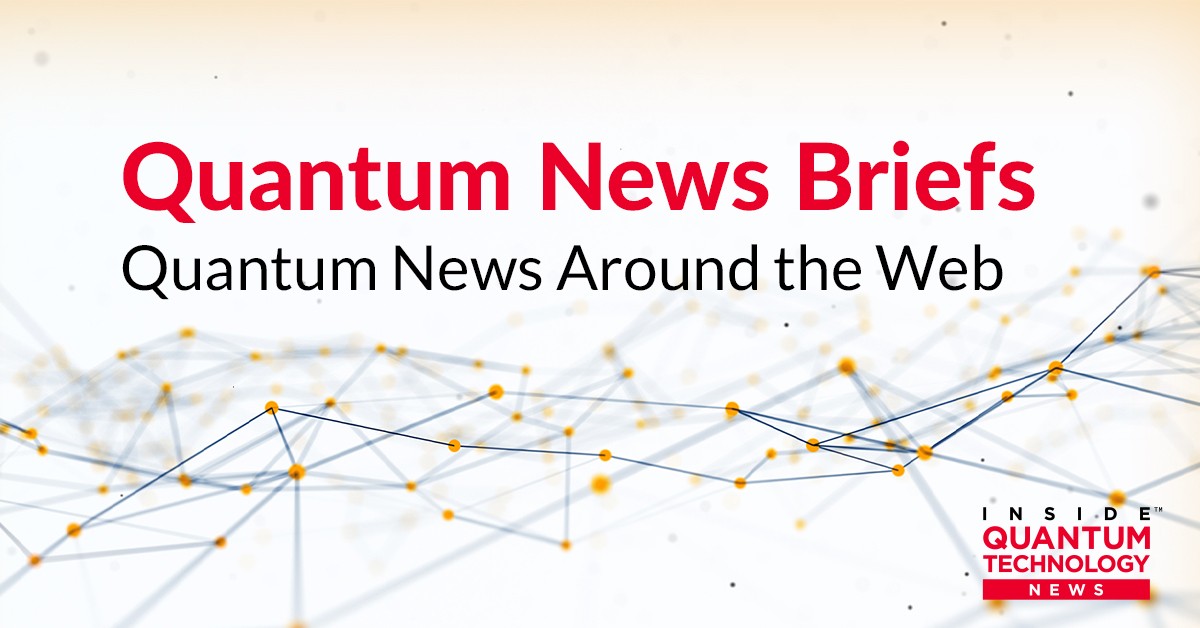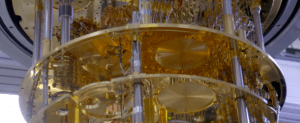Quantum News Briefs November 18: Can the US stop China’s rise in quantum computing? IBM prepares for quantum computing inflection point; New theory of electron spin to aid quantum devices + MORE

*****
Can the US stop China’s rise in quantum computing?
IBM prepares for quantum computing inflection point
 IBM just completed its yearly Quantum Summit. Quantum News Briefs summarizes the report Kevin Krewell made to Forbes about the event.
IBM just completed its yearly Quantum Summit. Quantum News Briefs summarizes the report Kevin Krewell made to Forbes about the event.
IBM has accomplished several Quantum roadmap milestones and set down a new challenge. During these Summits, IBM updates the industry on its on-going efforts to make quantum computing a key part of the future of computing and sets goals for future developments. The theme of the summit was “The Next Wave,” as IBM believes quantum is rapidly approaching an inflection point. The summit was located this year in downtown Manhattan and attended by many IBM business partners including Boeing, Bosch, Vodaphone, and many others. It was also well attended by academics and government researchers
The key to quantum computing acceptance and maturing as an industry will be building a healthy ecosystem and set of partnerships. IBM’s Quantum Network now numbers over 200 members. The company added new quantum innovation centers at Arizona State University, DESY, IIT Madras, and the newly opened uptownBasel innovation center in Switzerland. Its latest industry partners include Bosch, Crédit Mutuel Alliance Fédérale, Erste Digital, Tokyo Electron, HSBC, and Vodafone. IBM offers multiple offerings for its quantum program: including an open plan, a pay-as-you-go plan, as well as a premium plan. The company also offers a Quantum Accelerator program with support resources to businesses at any point on their journey to quantum readiness
IBM has been committed to quantum computing because, as Dario Gil, the company’s head of research told the audience at the beginning of the event, there are three general areas of computing: bits (classical), neurons (AI), and qubits (quantum). Click here to read Krewell’s complete article.
*****
New theory of electron spin to aid quantum devices
 Electron spin is of particular importance to a field of research called spintronics, which aims to develop quantum electronic devices that use spin in memory storage and information processing. Spin is also central to qubits—the basic unit of information used in quantum computing. The problem with using spin in these quantum devices is that its quantum states can be easily disrupted.
Electron spin is of particular importance to a field of research called spintronics, which aims to develop quantum electronic devices that use spin in memory storage and information processing. Spin is also central to qubits—the basic unit of information used in quantum computing. The problem with using spin in these quantum devices is that its quantum states can be easily disrupted.
In a new paper published in the journal Physical Review Letters, Marco Bernardi, professor of applied physics, physics and materials science; and Jinsoo Park, postdoctoral scholar research associate in applied physics and materials science at California Institute of Technology, have developed a new theory and numerical calculations to predict spin decoherence in materials with high accuracy.
“This new paper has taken our work a few steps further: we have adapted a theory of electrical transport to study spin, and discovered that this method can capture two main mechanisms governing spin decoherence in materials—spin scattering off atomic vibrations, and spin precession modified by atomic vibrations. This unified treatment allows us to study the behavior of the electron spin in a wide range of materials and devices essential for future quantum technologies. It is almost startling that in some cases we can predict spin decoherence times with an accuracy of a few percent of the measured values—down to a billionth of a second—and access microscopic details of spin motion beyond the reach of experiments. Ironically, our research tools—computers and quantum mechanics—can now be used to develop new computers that use quantum mechanics.”
*****
ParityQC & University of Innsbruck have developed a novel approach to universal quantum computing
 A group of physicists within ParityQC and the University of Innsbruck has developed a novel approach to universal quantum computing based on the ParityQC Architecture. In two papers recently published in the influential journals Physical Review Letters and Physical Review A, they propose a universal gate set for quantum computing, with all-to-all connectivity and intrinsic robustness to bit-flip errors. This method allows to overcome some of the main limitations of these devices and could be the basis for the next generation of quantum computers.
A group of physicists within ParityQC and the University of Innsbruck has developed a novel approach to universal quantum computing based on the ParityQC Architecture. In two papers recently published in the influential journals Physical Review Letters and Physical Review A, they propose a universal gate set for quantum computing, with all-to-all connectivity and intrinsic robustness to bit-flip errors. This method allows to overcome some of the main limitations of these devices and could be the basis for the next generation of quantum computers.
At the root of this important achievement is the ParityQC Architecture. Also known as LHZ Architecture (after the authors Wolfgang Lechner, Philipp Hauke and Peter Zoller), this novel type of encoding was discovered in 2015 to wide acclaim within the scientific community. “This architecture was originally designed for optimization problems,” recalls Wolfgang Lechner, co- founder and co-CEO of ParityQC and professor at the University of Innsbruck. “In the process, we reduced the architecture to a minimum in order to solve these optimization problems as efficiently as possible. The physical qubits in this architecture do not represent individual bits but encode the relative coordination between the bits. This means that not all qubits have to interact with each other anymore”.
The recently published research shows that the ParityQC Architecture can be employed efficiently for the creation of a universal quantum computer. The main reason is that quantum computers implementing the architecture can perform operations between two or more qubits on a single qubit. “Existing quantum computers already implement such operations very well on a small scale,” explains the author Michael Fellner. “However, as the number of qubits increases, it becomes more and more complex to implement these gate operations”. The two papers show that through the ParityQC Architecture it is possible to perform certain operations, such as Shor’s algorithm for factoring numbers, quickly and efficiently.
*****
Sandra K. Helsel, Ph.D. has been researching and reporting on frontier technologies since 1990. She has her Ph.D. from the University of Arizona.







 Whether the US can effectively curb China and its rise in quantum computing at a time when the latter appears to be closing the gap in quantum supremacy remains an open question, according to this article by Afiq Fitri, a data journalist for Tech Monitor. Quantum News Briefs summarizes
Whether the US can effectively curb China and its rise in quantum computing at a time when the latter appears to be closing the gap in quantum supremacy remains an open question, according to this article by Afiq Fitri, a data journalist for Tech Monitor. Quantum News Briefs summarizes 











